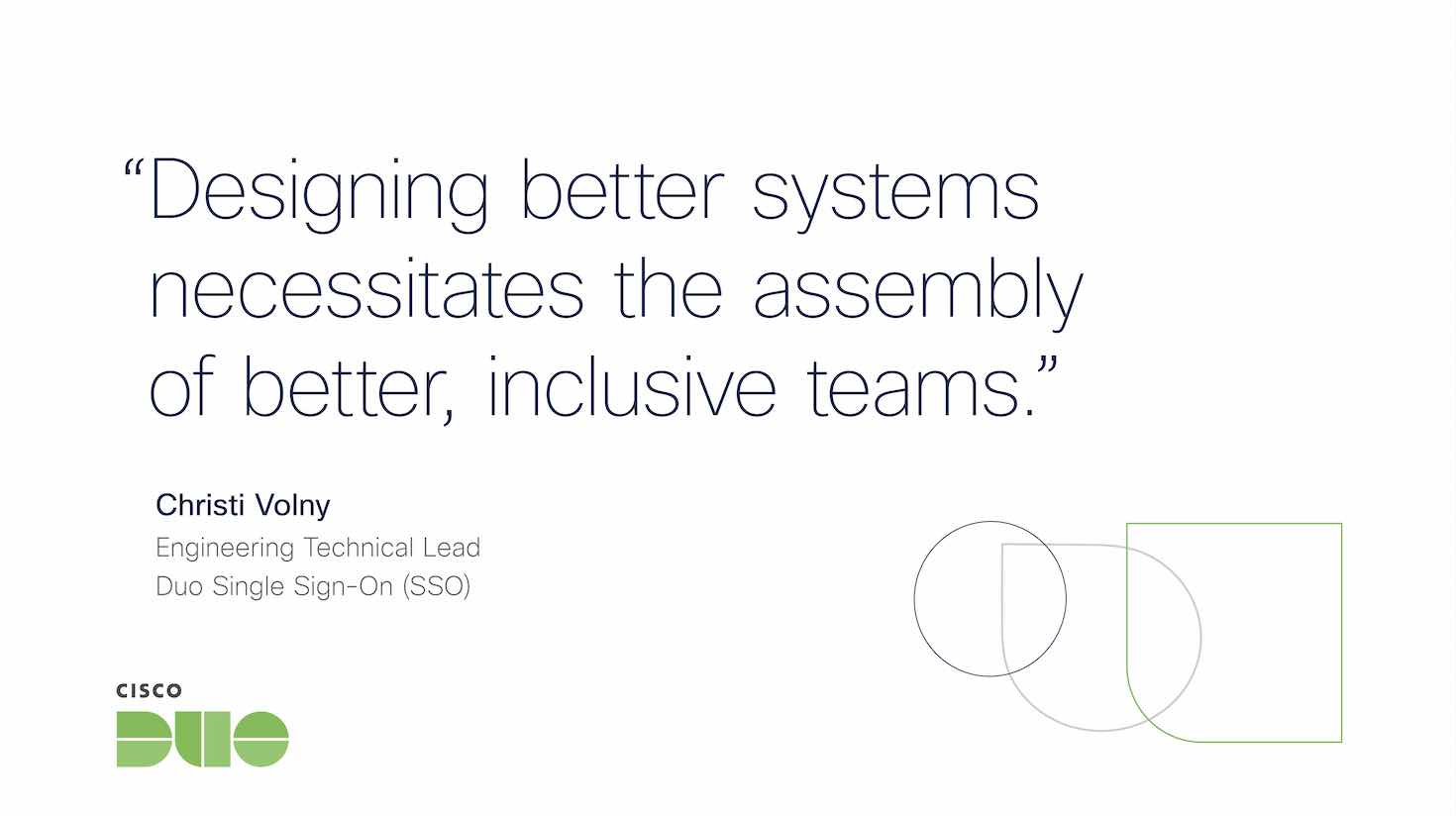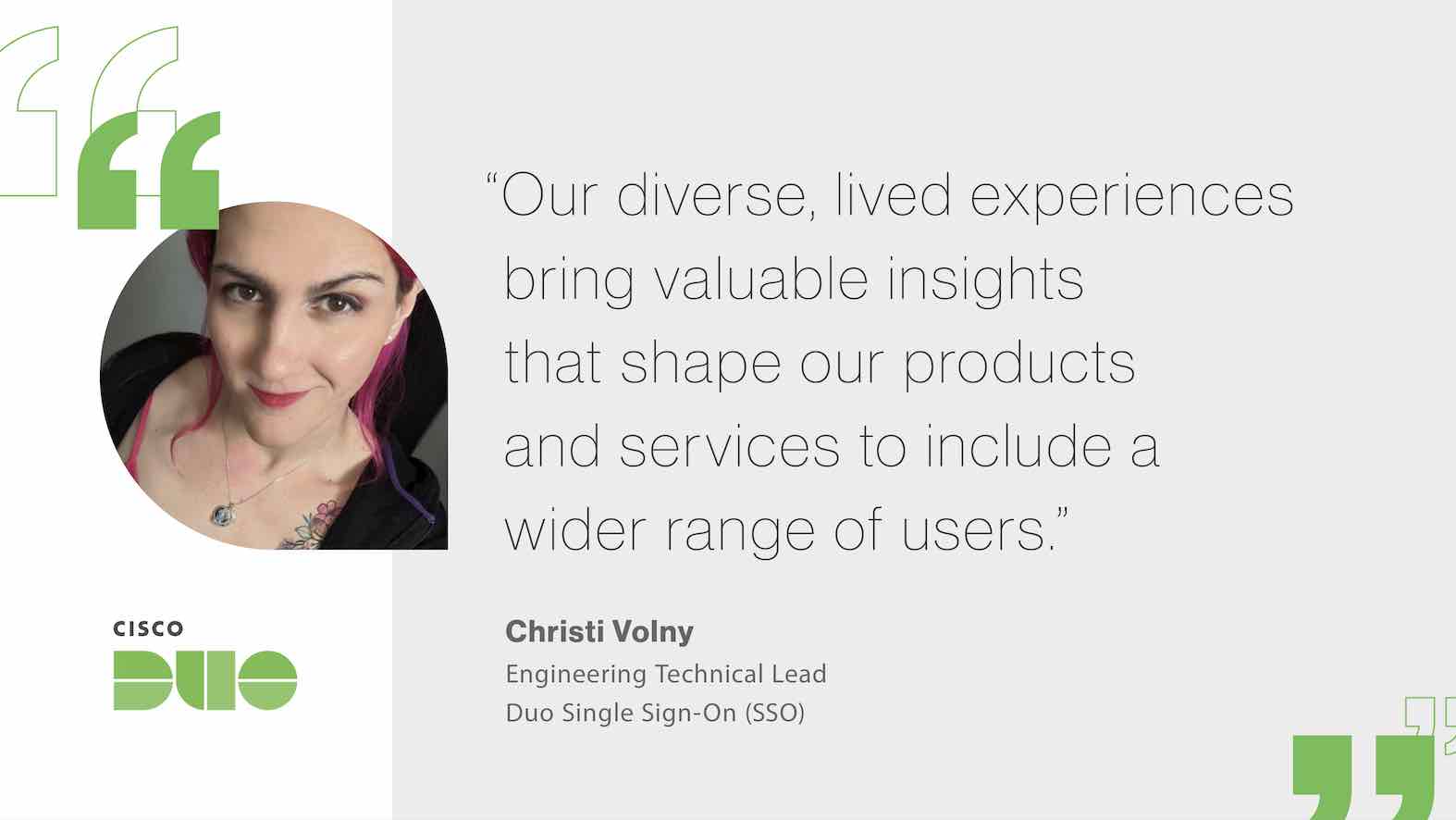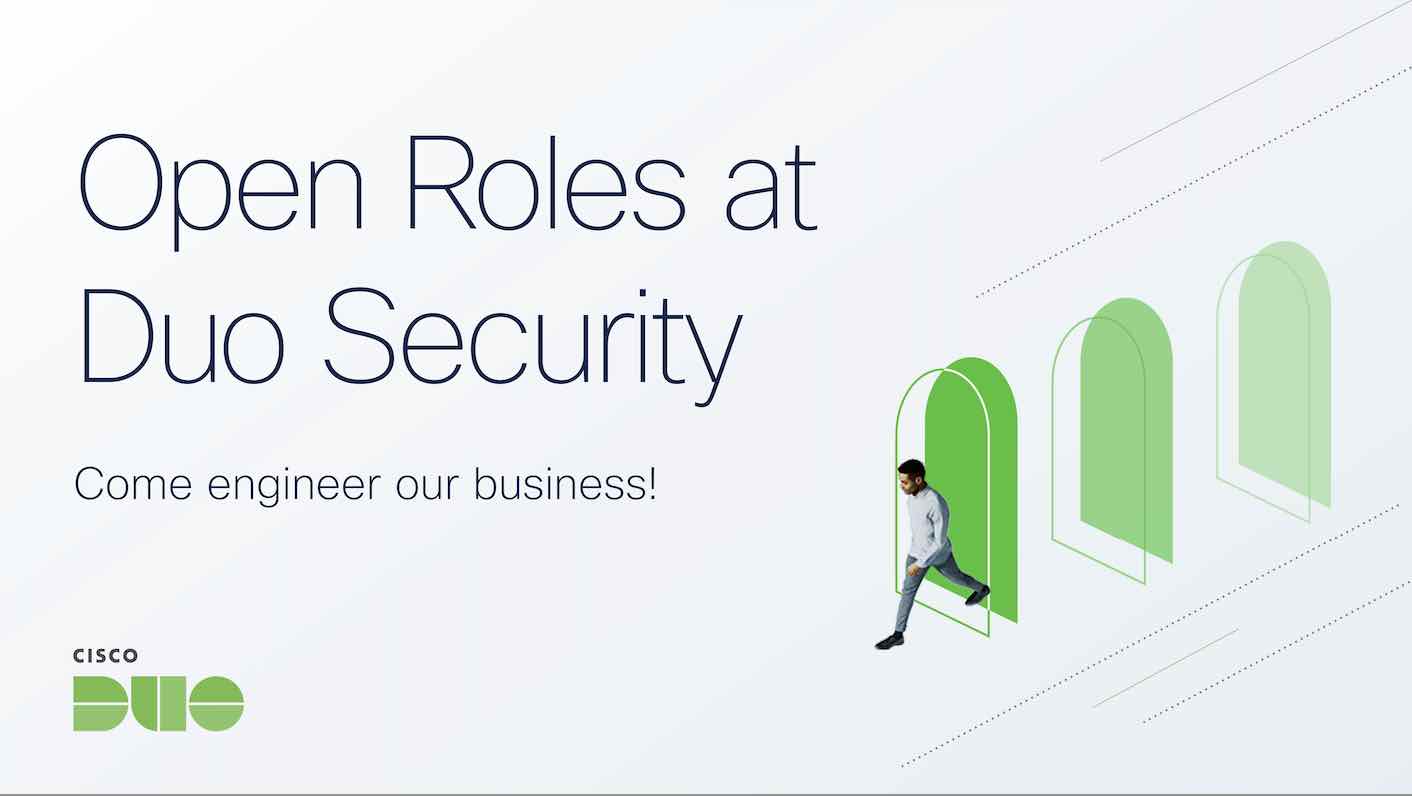Pride and Processes: Building an Inclusive Culture and an Empowered LGBTQ+ Future
June is LGBTQ Pride Month: a month-long celebration of visibility, solidarity and perseverance for the worldwide LGBTQ+ community. As we commemorate Pride and celebrate our legal recognitions and rights, it’s important that we acknowledge that not all queer people, a term to describe anyone who is a Gender and Sexual Minority, experience the same challenges or privileges.
The struggles faced by our most marginalized queers demand our attention and concerted efforts; their struggles relate to and represent all of our struggles. In this post, we delve into the hardships faced by marginalized queers, the power of unity, and how we might change our systems, technologies, and teams to empower instead of oppress.
I’m Christi Volny, a transgender lesbian, and I work as an Engineering Technical Lead on our Duo Single-Sign On (SSO) team. My experiences as a queer woman inform how I do my work: how I recruit and mentor teammates, how I lead engineering and organizational efforts and even how I design and deliver new features. If building inclusive culture, teams and products is important to you, visit our open opportunities.
The struggle of marginalized queers
For many in the LGBTQ+ community, we face a difficult journey toward acceptance and self-expression in the face of bias and oppression. Transgender individuals, people of color, and those with intersecting identities face unique and nuanced challenges that are often not represented in our histories and stories.
Discrimination, violence and systemic oppression impact their lives disproportionately, and it is important we continue to fight for liberation and equity until we are all elevated. This state of inequity demands that we actively address these challenges and work toward creating safer spaces that foster inclusion, empowerment and well-being for everyone.
Unity for a better world
Our communities’ progress lies in collective action and unity. Pride Month serves as a reminder that by standing together against injustice, we can affect positive change. Allyship extends beyond just our heterosexual friends and colleagues — it includes anyone with dimensions of privilege that can amplify and support marginalized voices. My role as a white queer is to amplify the voices of queer people of color; the role of my cisgender (a person whose gender identity corresponds with their sex assigned at birth) peers is to amplify the voices of transgender people like myself. We all have our roles and dimensions in creating a more inclusive society.
The role of systems and technology
Our systems, processes and technologies wield significant influence over our day-to-day lives. They can codify and perpetuate existing biases and cultures of oppression, or they can be retooled to empower and include previously excluded experiences.
“Our systems, processes and technologies wield significant influence over our day-to-day lives. They can codify and perpetuate existing biases and cultures of oppression, or they can be retooled to empower and include previously excluded experiences.”
Recognizing that we have inequity, we must critically analyze why and how we build these systems to ensure that our technologies, teams and organizations are inclusive and sensitive to diverse perspectives. Much like the proliferation of the Internet connected and amplified a world of diversity, we can provide our users with platforms that enable self-expression, dignity and respect, and empower them to flourish.
Building more inclusive teams
Designing better systems necessitates the assembly of better, inclusive teams. Hiring transgender individuals, among other underrepresented groups, crucially informs our organizations’ perspectives and offerings.

When I joined Duo SSO in 2021, I felt empowered to share my experiences navigating our systems and using our products that previously weren’t experienced by my teammates. One example of how that has looked is our use of name information in products and how this can be an opportunity to empower our users.
Transgender people will often change their given names to reflect their gender identity, but the legal process of making that change can be tedious and expensive. When I log into an information system that uses my legal name instead of a display or “preferred” name (for transgender people this is often called “dead-naming”), this exposes me to risks not faced by my teammates with gender-congruent names; it’s a problem they don’t face in their lives and hadn’t considered until our team included my perspective.

With that information and understanding our role in reducing harm, my team built a Cisco Hack-Day project to demonstrate a name override feature so that end-users can update their names supplied through Duo SSO rather than rely on integrations to support their own display name feature. Now we’re folding that into our software engineering process to be included in a future release. Our diverse, lived experiences bring valuable insights that shape our products and services to include a wider range of users.
That said, we cannot snap our fingers, perform lip service to inclusion and allyship, and expect diverse teams to manifest themselves. As organization and industry leaders, we must actively listen to peers and cultivate inclusive workplaces where our teammates can excel and thrive. This means providing employee resources, platforms and support in ways that our organizations don't traditionally offer. This ensures our marginalized teammates can recognize people like themselves in leadership, can safely ask for accommodations, and can grow their careers like everyone else.
Prioritizing user experiences and feedback
While striving for inclusion is crucial to building better products, we must also recognize that it is impossible to represent every intersectional class on every product team. Therefore, it is important that we prioritize soliciting diverse user feedback and evolving our products to include those experiences.
We must work to reduce friction and enable our customers to share their needs and concerns, particularly when our products misrepresent them (identity) or misuse their information (sensitive information such as legal name). Establishing trust amongst our leadership, customer support, technical writers, product managers, product designers, and engineering teams is essential for addressing and prioritizing these change requests.
A time to reflect and amplify
As LGBTQ+ Pride Month unfolds, let us reflect on the struggles that our most marginalized community members face and commit ourselves to building a more inclusive future for all of us. By uniting as a whole community, challenging oppressive systems and embracing diversity in our teams, we can create technologies that empower all users to express themselves authentically and with safety.
“By uniting as a whole community, challenging oppressive systems and embracing diversity in our teams, we can create technologies that empower all users to express themselves authentically and with safety.”
Prioritizing diverse user feedback and ensuring diverse voices are heard will allow us to correct shortcomings and strive toward a world that celebrates and uplifts every individual, regardless of their sexual orientation, gender identity and intersectional experiences.
Together, we can pave the way for a future where the entire LGBTQ+ community can thrive and flourish. Happy Pride!
Interested in working for a company that values diversity?
Cisco offers a range of benefits for LGBTQ+ employees including medical support, employee resource groups, parental benefits and more. As we learn together, we also listen to our teammates’ concerns and improve these offerings. We strive to ensure Cisco is an inclusive workplace for all and are proud to have a score of 100 on the Human Rights Campaign Corporate Equality Index.
Visit our open roles to contribute to cultivating inclusive culture while building for the future.


